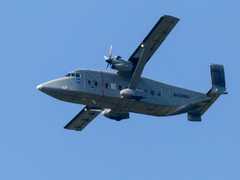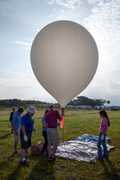Back to Explore
NASA Carbon Atmospheric Flux Experiment
Carbon Cycle & Ecosystems
- 2
- Deployments
2017-05-03 2017-05-26 2016-09-07 2016-09-26 - 2
- Platforms
- 1
- Data Products
The Campaign
The NASA Carbon Airborne Flux Experiment (CARAFE) was a NASA study that studied carbon flux and other anthropogenic emissions along the mid-Atlantic coast. CARAFE included two deployments in September 2016 and May 2017 across the eastern U.S. NASA’s C-23 Sherpa was equipped with several in situ sensors to collect atmospheric chemistry and meteorological measurements. CARAFE was funded by NASA’s Carbon Monitoring System Program, Goddard Space Flight Center’s Internal Research and Development Program, and NASA HQ’s Earth Science Division.
2016-09-07 — 2017-05-26
Eastern United States Coast, Mid-Atlantic Region
boreal fall, boreal summer
N: 40°N
S: 35°N
W: 77°W
E: 74°W
Additional Notes
Repositories
Events
2 Deployments
2 IOPs
Filter data products from this campaign by specific platforms, instruments, or formats.
PLATFORMS
INSTRUMENTS
NASA
GSFC Internal Research and Development, NASA Carbon Monitoring System Program, NASA HQ Earth Science Division
Kenneth W. Jucks, Kathleen Hibbard, Hank Margolis
Randy Kawa
Gao Chen, Ali Aknan
Currently unavailable

